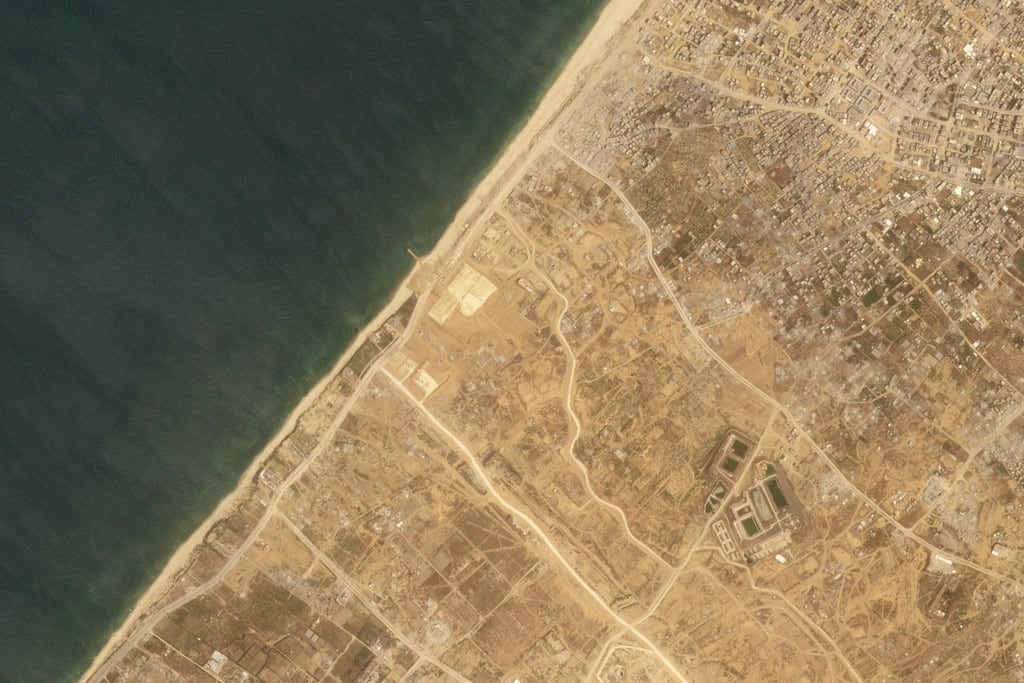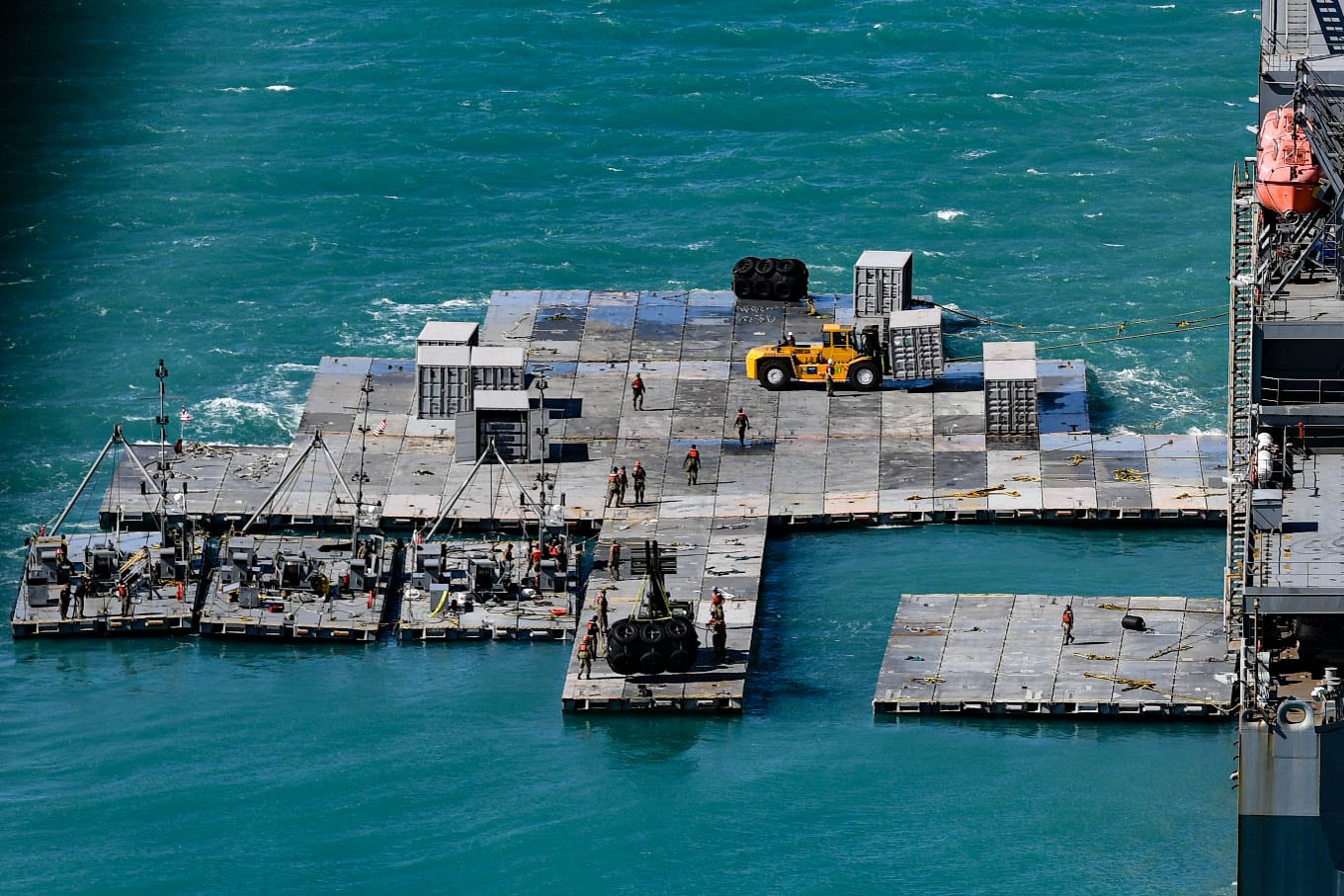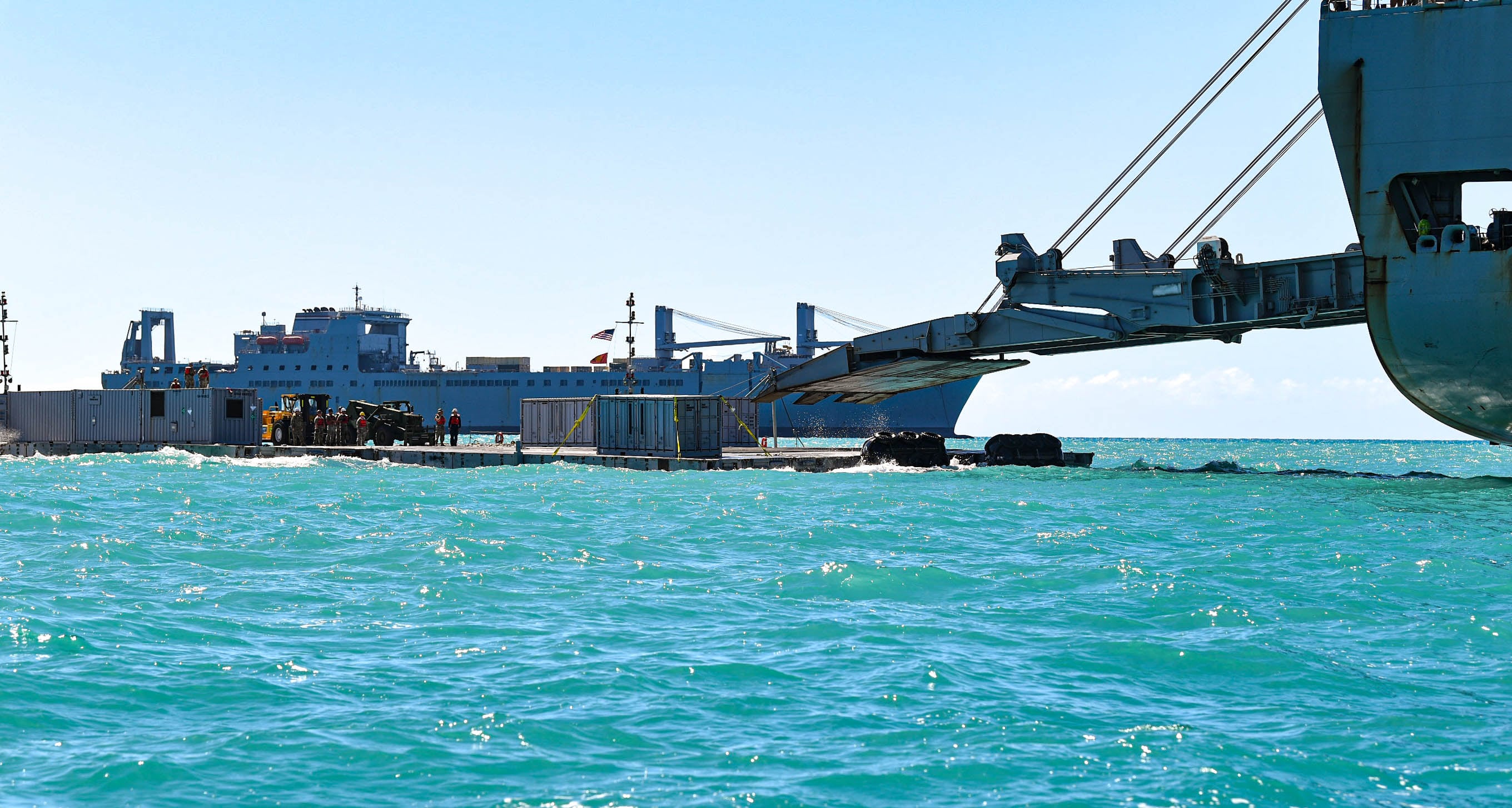JERUSALEM — A U.S. Navy ship and several Army vessels involved in an American-led effort to bring more aid into the besieged Gaza Strip are offshore of the enclave and building out a floating platform for the operation, which the Pentagon said Monday will cost at least $320 million.
Sabrina Singh, Pentagon spokeswoman, told reporters the cost is a rough estimate for the project and includes the transportation of the equipment and pier sections from the U.S. to the Gaza coast, as well as the construction and aid delivery operations.
Satellite photos analyzed Monday by The Associated Press show the USNS Roy P. Benavidez about 5 miles from the port on shore, where the base of operations for the project is being built by the Israeli military. The USAV General Frank S. Besson Jr., an Army logistics vessel, and several other Army boats are with the Benavidez and working on the construction of what the military calls the Joint Logistics Over-the-Shore, or JLOTS, system.
A satellite image from Sunday by Planet Labs PBC showed pieces of the floating pier in the Mediterranean Sea alongside the Benavidez. Measurements of the vessel match known features of the Benavidez, a Bob Hope-class vehicle cargo ship operated by the Military Sealift Command.
A U.S. military official confirmed late last week that the Benavidez had begun construction and that it was far enough off shore to ensure troops building the platform would be safe. Singh said Monday that next will come the construction of the causeway, which will then be anchored to the beach.
RELATED

U.S. and Israeli officials have said they hope to have the floating pier in place, the causeway attached to the shore and operations underway by early May. The cost of the operation was first reported by Reuters.
Under the plan by the U.S. military, aid will be loaded onto commercial ships in Cyprus to sail to the floating platform now under construction off Gaza. The pallets will be loaded onto trucks, which will be loaded onto smaller ships that will travel to a metal, floating two-lane causeway. The 1,800-foot causeway will be attached to the shore by the Israeli Defense Forces.
The U.S. military official said an American Army engineering unit has teamed with an IDF engineering unit in recent weeks to practice the installation of the causeway, training on an Israeli beach just up the coast.
The new port sits just southwest of Gaza City, a bit north of a road bisecting Gaza that the Israeli military built during the current fighting against Hamas. The area was the territory’s most populous before the Israeli ground offensive rolled through and pushed more than 1 million people south toward the city of Rafah on the Egyptian border.
Now Israeli military positions sit on either side of the port, which initially had been built, as part of an effort led by World Central Kitchen, out of the rubble of buildings leveled by Israel. That effort halted after an Israeli airstrike killed seven World Central Kitchen aid workers on April 1 as they traveled in clearly marked vehicles on a delivery mission authorized by Israel. The organization says it is resuming its work in Gaza.
Aid has been slow to get into Gaza, with long backups of trucks awaiting Israeli inspections. The U.S. and other nations also have used air drops to send food into Gaza. The U.S. military official said deliveries on the sea route initially will total about 90 trucks a day and could quickly increase to about 150 trucks daily.
Aid organizations have said several hundred such trucks are needed to enter Gaza every day.
In the aftermath of Hamas’ Oct. 7 attack on Israel, which killed 1,200 people and saw 250 others taken hostage, Israel cut off or heavily restricted food, water, medicine, electricity and other aid from entering the Gaza Strip. Under pressure from the U.S. and others, Israel says the situation is improving, though United Nations agencies have said much more aid needs to enter.
RELATED

Gaza, slightly more than twice the size of the city of Washington and home to 2.3 million people, has found itself on the precipice of famine. More than 34,000 Palestinians have been killed in Gaza since the fighting began, local health authorities say.
On Sunday, Israeli military spokesman Rear Adm. Daniel Hagari said the amount of aid going into Gaza would continue to scale up.
“This temporary pier will provide a ship-to-shore distribution system that will further increase the flow of humanitarian aid into Gaza,” he said in a statement.
But high-ranking Hamas political official Khalil al-Hayya told the AP that the group would consider Israeli forces — or forces from any other country — stationed by the pier to guard it as “an occupying force and aggression,” and that the militant group would resist it.
On Wednesday, a mortar attack targeted the port site, though no one was hurt.
Associated Press reporters Tara Copp and Lolita C. Baldor in Washington contributed to this report.




